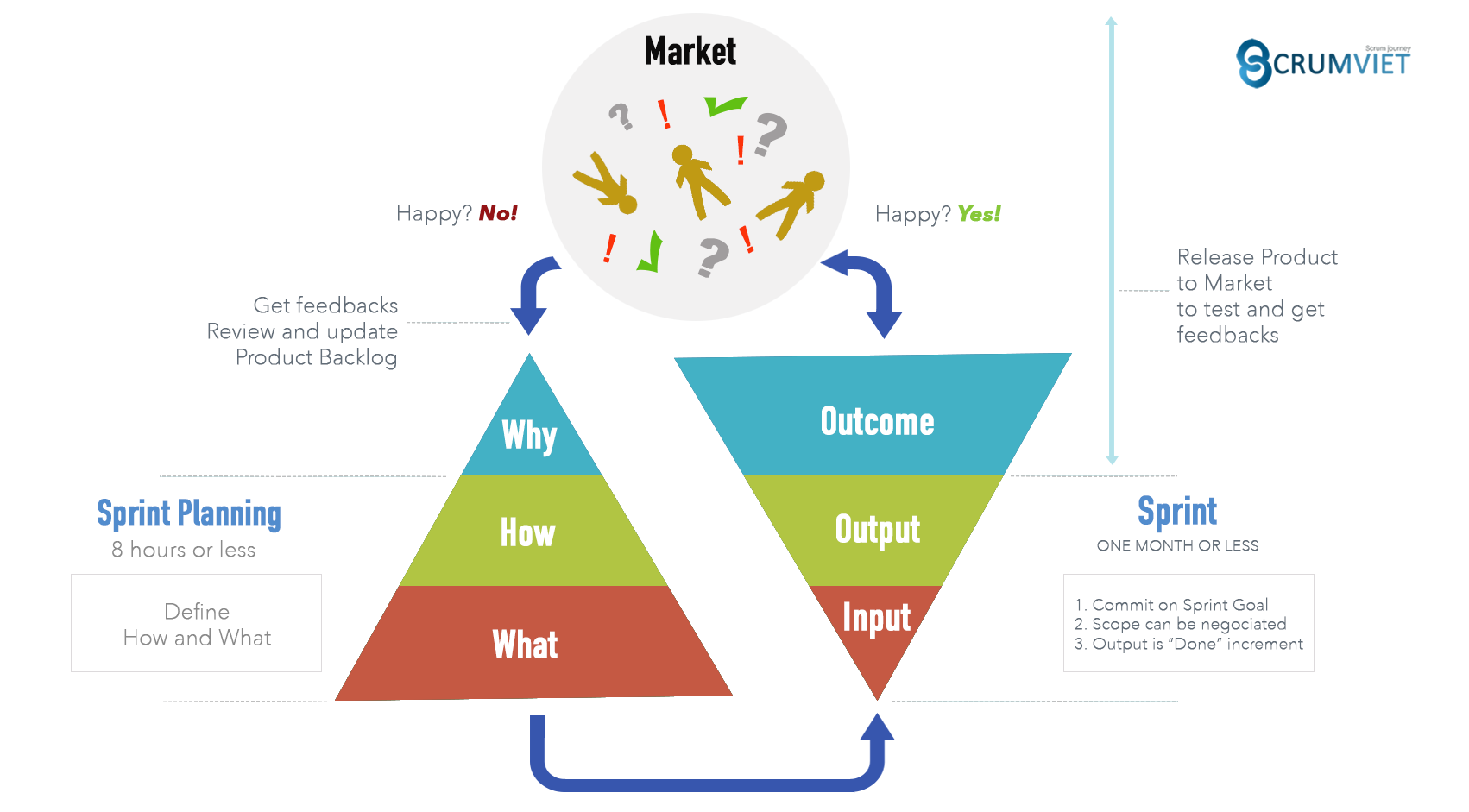Many years ago, I questioned myself about what makes a software product successful and what makes it fail. In project management, I observed that even we deliver the project within budget, scope, and time, it still has the jeopardy to be failed when launching into the market.
I was keeping to research and observe what is essential to make the product successful. I found that: one of the reasons to impact the success of the product is a weak connection between Input, Output, and Outcome. People are easy to focus too much on Output but less focus on Outcome or don’t build a strong connection between Input, Output, and Outcome.
Definition of “Input,” “Output,” and “Outcome.”
Input: Anything needs for project or product. In this context, will be: Money, time estimated, resources, people, efforts, plans, documents… prepared for that project or product
Output: In term of Project or Product will be: Features, Product, or Service can be used by users. (measurable)
Outcome: Feedbacks or feeling of the user when using the product or the features. (hard to be measured)

If we investigate deeper, when we invest Money, Resources, and Technology to a project, it is “Input”. Then the result of that investment is a product, or features meet with the initial requirement, on-time, and on budget – is “Output”. In the next step, we deliver the product and features to market for the end-users to use. In this phase, the feedbacks and feeling of the users about the product or service is “Outcome”.
The broken line between Input, Output, and Outcome.
Many people thought that the product would be a success if we have many features more than their competitor’s. It is not entirely wrong. But the success of the product also needs to be realized from the other elements. Such as: whether the users happy with the features of your product, or it makes them disappointed and go with your competitors, even your product has many features. In this case, you will lose the users and waste all the efforts to build the product.
Especially, software development is a complex environment, by “Technology”, “People” and “Market”. Therefore, focus on increasing the number of features, or trying to gold plate the idea, looking for perfection, but not link it with the market is a danger. It can lead you to build an outdated product or a thing users never need.
For that reason, let’s build the line to connect your product with the users, get the feedbacks and feeling of them about the product as soon as possible and frequently. It will help you collect the data and sight to continues to improve product values. Instead of spending all money, effort, and long duration to develop, then bring it to the market, it just likes a big gamble, where you play “All in” but the percent of win is low.

Conclusion
“Input”, “Output” or “Outcome” are the same level of importance. If you forget one or do not have a connection between “Input”, “Output”, “Outcome”, it will impact the success of your product. Therefore, build the circle with a strong connection between “Input”, “Output”, and “Outcome”, to deliver the value to the user fast enough and frequently for the experiment, and learn from your users is essential. That is the core of Scrum. Every Sprint (with time-box is one month), we have a Done Increment is ready to send to the users. From that, we will receive feedback to improve our product in the next Sprint. Scrum creates a strong connection between “Input”, “Output”, and “Outcome”.